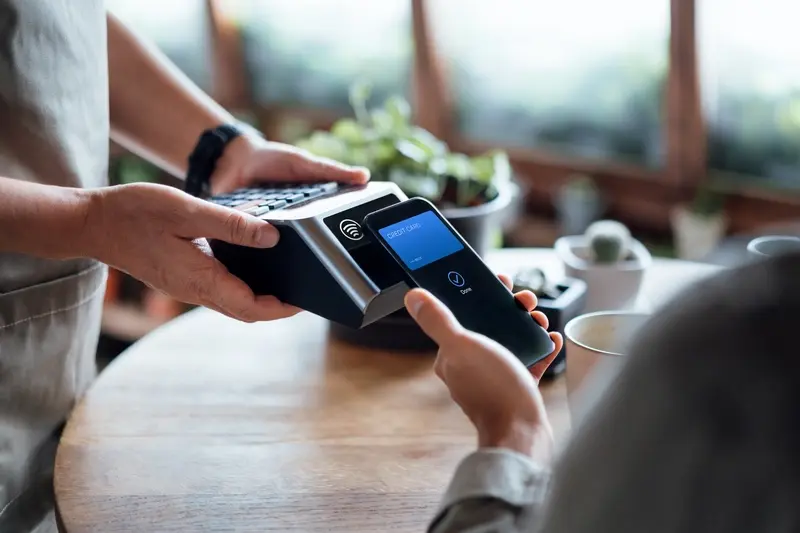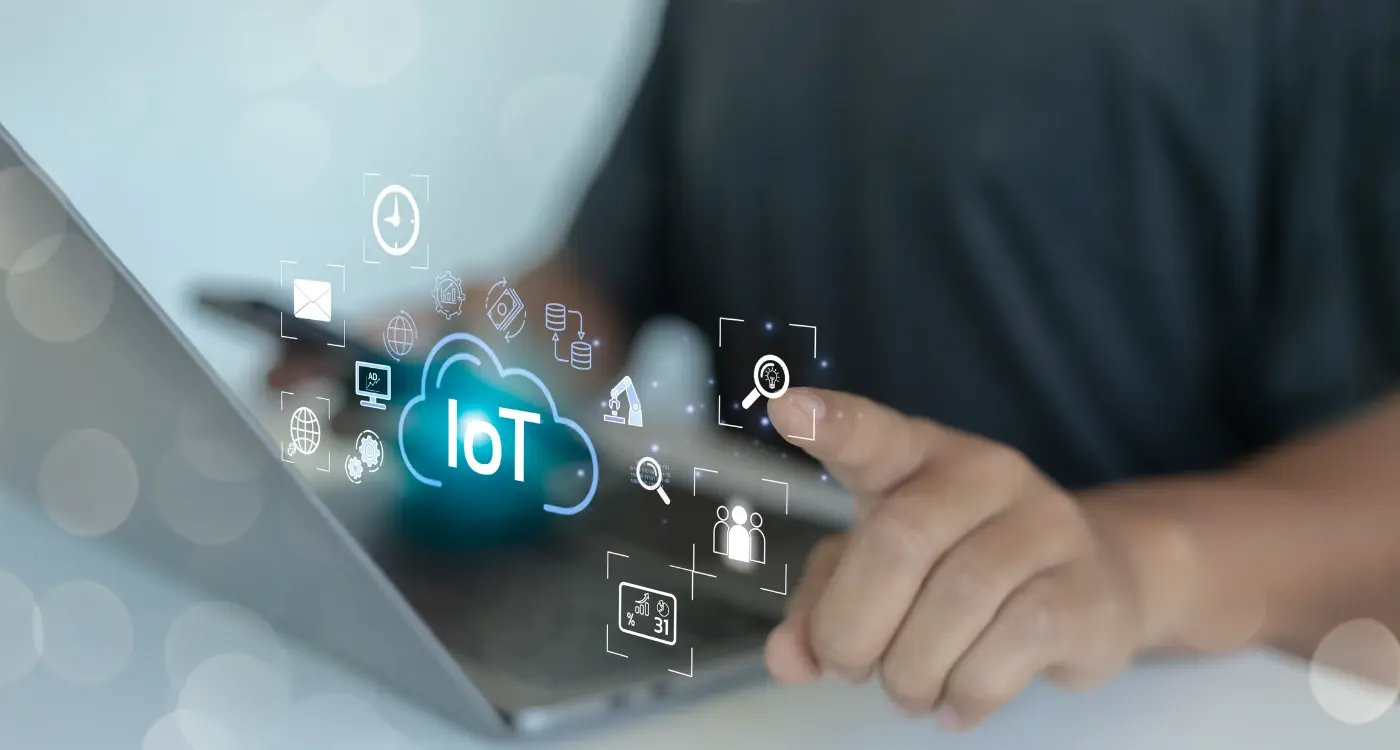How Do I Connect My Mobile App to Smart Home Devices?
You walk into your living room after a long day and reach for three different apps on your phone. One to turn on the lights, another to adjust the thermostat, and a third to check your security cameras. Sound familiar? If you're nodding your head right now, you're not alone—millions of smart home device owners are juggling multiple apps every single day just to control their connected devices.
The problem is that most smart home manufacturers create their own separate mobile apps, leaving you with a phone full of individual control apps that don't talk to each other. It's frustrating, time-consuming, and frankly quite messy. What if I told you there's a better way? What if you could create one unified mobile app that connects to all your smart home devices seamlessly?
The average smart home has seven different connected devices, but most homeowners use four separate apps to control them all
That's exactly what we're going to explore in this guide. Over the past eight years, I've helped countless clients build mobile apps that connect to everything from smart thermostats and lighting systems to security cameras and door locks. The technology isn't as complicated as you might think—but there are some important steps you need to get right from the start. We'll walk through choosing the right communication protocols, setting up your development environment properly, and building features that actually make sense for real people using real devices in their homes. By the end of this guide, you'll have everything you need to create a smart home mobile app that brings all those scattered controls together in one place.
Understanding Smart Home Technology
Smart home devices are basically ordinary household items that can connect to the internet and be controlled remotely. Think of your regular light bulb—now imagine you could turn it on or off using your phone even when you're not at home. That's what makes it "smart".
The beauty of smart home technology lies in how these devices communicate with each other and with your mobile app. Your thermostat can talk to your heating system; your security camera can send alerts to your phone; your smart doorbell can show you who's at the door whilst you're at work. But here's the thing—they all speak different "languages" or protocols.
Types of Smart Home Devices
When you're building a mobile app to control smart homes, you'll encounter several categories of devices:
- Lighting systems (bulbs, switches, dimmers)
- Climate control (thermostats, air conditioning units)
- Security devices (cameras, door locks, motion sensors)
- Entertainment systems (speakers, televisions, streaming devices)
- Kitchen appliances (smart fridges, coffee machines, ovens)
- Garden equipment (sprinkler systems, outdoor lighting)
How Smart Devices Connect
Most smart home devices connect through your home's Wi-Fi network, but some use other methods like Bluetooth or special protocols designed specifically for smart homes. The tricky part is that different manufacturers often use different connection methods—which means your app needs to understand multiple ways of "talking" to these devices.
Some devices work independently, whilst others need a central hub to coordinate everything. Understanding these differences will help you plan how your mobile app should interact with each type of device in a user's home.
Choosing the Right Communication Protocols
When you're building a mobile app that talks to smart home devices, you need to pick the right language for them to speak to each other. Think of it like choosing between English, French, or Spanish—your app and your connected devices need to use the same language to understand each other properly.
The most common protocols you'll come across are Wi-Fi, Bluetooth, Zigbee, and Z-Wave. Wi-Fi is brilliant for devices that need lots of data quickly—like security cameras or smart speakers. Bluetooth works well for things that are close to your phone, such as smart locks or fitness trackers. Zigbee and Z-Wave are popular for creating networks of small devices like sensors and light bulbs because they use less power and create a mesh network.
Popular Protocol Options
- Wi-Fi: Great for high-bandwidth devices, easy to set up, works with existing home networks
- Bluetooth: Perfect for nearby devices, low power consumption, simple pairing process
- Zigbee: Creates mesh networks, very low power, supports many devices simultaneously
- Z-Wave: Excellent reliability, less interference, built for home automation
- Matter: New universal standard, works across different brands and platforms
Start with Wi-Fi and Bluetooth if you're new to smart home development—they're the easiest to implement and most widely supported by mobile platforms.
Your choice depends on what your smart home devices actually do. Battery-powered sensors work best with Zigbee or Z-Wave because these protocols won't drain the battery quickly. Smart TVs and streaming devices prefer Wi-Fi because they need to move lots of data around. The key is matching the protocol to your device's needs, not just picking the fanciest option available.
Setting Up Your Development Environment
Getting your development environment ready for smart home app development isn't as complicated as you might think, but there are definitely some specific things you'll need to consider that don't apply to regular mobile apps. The biggest difference? You're not just dealing with one platform anymore—you're working with multiple devices that all speak different languages.
First things first, you'll need your standard mobile development tools. For iOS, that means Xcode on a Mac; for Android, Android Studio works on pretty much any machine. Nothing new there. But here's where it gets interesting—you'll also need to install the SDKs for the smart home protocols you plan to support.
Protocol-Specific Development Kits
If you're working with Zigbee devices, you'll need the Zigbee SDK. Planning to connect to Matter devices? Get the Matter SDK installed. Each protocol has its own development kit, and trust me, you don't want to be halfway through development only to realise you're missing a key component. Most of these SDKs are free, but some require developer accounts with the respective organisations.
Testing Equipment You'll Actually Need
Here's something most guides don't tell you—you need real smart home devices for testing. I know it sounds obvious, but simulators only get you so far. You don't need every device under the sun, but having a few different types (lights, sensors, switches) from different manufacturers will save you headaches later. Different brands implement protocols slightly differently, and these quirks only show up with real hardware testing.
Don't forget about network testing tools either. Apps like WiFi Analyser help you understand what's happening on your local network, which becomes invaluable when devices aren't connecting properly.
Building Device Discovery and Pairing Features
Getting your mobile app to find and connect with smart home devices is honestly one of the trickier parts of the whole process. You need your app to scan the local network, identify compatible devices, and then establish a secure connection—all whilst making it look effortless to your users.
Most smart home devices announce themselves on your Wi-Fi network using something called mDNS (multicast DNS) or through Bluetooth Low Energy broadcasts. Your app needs to listen for these announcements and present them to users in a clean, organised list. The good news is that both iOS and Android provide built-in APIs for network discovery; the challenging bit is handling all the different device types and their quirks.
Making Pairing Simple
Users don't want to jump through hoops to connect their devices. The pairing process should guide them step-by-step, with clear instructions and visual feedback. Some devices require you to press a physical button, others need you to enter a PIN code, and newer devices might use QR codes or NFC tapping.
The best pairing experiences feel almost magical to users—devices just seem to know they belong together without any complicated setup procedures
Handling Connection Failures
Here's where experience really matters: things will go wrong. Wi-Fi networks can be flaky, devices might not respond, or users might enter the wrong credentials. Your app needs to handle these scenarios gracefully with helpful error messages that actually tell users what went wrong and how to fix it. Don't just show "Connection failed"—explain whether it's a network issue, a device problem, or something else entirely. Building robust retry logic and timeout handling will save you countless support headaches later on.
Creating User-Friendly Control Interfaces
Once you've got your devices talking to your app, the real challenge begins—making those controls actually usable. I've seen too many smart home apps that look like they were designed by engineers for engineers. Buttons everywhere, confusing icons, and menus buried three levels deep. Your users don't want to study a manual just to turn on their living room lights.
The best control interfaces feel natural from the moment someone opens your app. Start with the most common actions your users will perform daily. These should be front and centre, not hidden behind hamburger menus or fancy animations. If someone wants to adjust their thermostat or check their security cameras, they shouldn't have to hunt for it.
Design Principles That Actually Work
Keep your interface layouts simple and predictable. Group related controls together—all your lighting controls in one section, security devices in another. Use familiar icons that people already understand; a lightbulb for lights, a thermometer for temperature controls. Don't get creative here—clarity beats creativity every time.
- Make buttons large enough to tap easily
- Use clear labels alongside icons
- Show device status at a glance
- Provide immediate feedback when controls are pressed
- Keep frequently used controls on the main screen
Response Time Matters More Than You Think
Nothing frustrates users more than tapping a button and waiting. Your interface should respond immediately, even if the actual device takes a moment to react. Show loading states or confirmation messages so users know their command was received. If a device is offline or not responding, tell them straight away rather than leaving them guessing.
Implementing Security and Privacy Protection
When you're connecting your mobile app to smart home devices, security isn't just important—it's absolutely non-negotiable. I've seen too many apps rush to market without proper security measures, only to face serious problems later. Your users are trusting you with access to their homes, their daily routines, and their personal data.
The foundation of smart home security starts with encryption that protects IoT communications. Every piece of data flowing between your mobile app and connected devices needs to be encrypted using protocols like TLS 1.3 or AES-256. This protects information whilst it travels across networks, preventing unauthorised access to sensitive commands or status updates.
Always implement certificate pinning in your mobile app to prevent man-in-the-middle attacks on smart home communications.
Authentication and Access Control
Strong authentication goes beyond simple passwords. Multi-factor authentication should be standard, and you'll want to implement proper session management with tokens that expire regularly. Each connected device should have its own authentication credentials—never use shared keys across multiple devices.
Privacy by Design
Privacy protection means being transparent about what data you collect and why. Smart home apps often gather location data, usage patterns, and device status information. Users deserve to know exactly what's being collected and stored.
- Implement data minimisation—only collect what you absolutely need
- Provide clear opt-out mechanisms for data collection
- Use local processing where possible to reduce data transmission
- Regular security audits and penetration testing
- Secure API endpoints with rate limiting and input validation
Regular security updates are part of your ongoing responsibility. Smart home technology evolves quickly, and new vulnerabilities emerge regularly. Build your update mechanism into the app from day one—your users' security depends on it.
Testing Your Smart Home App Integration
Right, you've built your smart home app and connected it to devices—but here's the thing that catches most developers off guard: testing smart home integrations is completely different from testing regular apps. You can't just run automated tests and call it a day. Smart home apps need to work with real physical devices, unpredictable network conditions, and users who expect everything to work instantly.
Start with unit testing your communication protocols. Test how your app handles device timeouts, network drops, and malformed responses from devices. I've seen too many apps crash when a smart bulb sends an unexpected status code or when Wi-Fi cuts out mid-command. Your app should gracefully handle these scenarios without leaving users confused about whether their lights are actually on or off.
Creating Your Test Environment
Set up a proper testing space with actual smart home devices—not just simulators. You'll need devices from different manufacturers to test compatibility issues. Network simulation tools can help you test various connection speeds and interruptions, but nothing beats testing with real hardware in real conditions.
Key Testing Scenarios
Focus on these critical testing areas that often get overlooked:
- Device discovery when multiple devices are present
- Command execution during poor network conditions
- App behaviour when devices go offline unexpectedly
- Battery drain during continuous device monitoring
- Security authentication under various scenarios
- Multiple user access to the same devices
Don't forget to test edge cases like what happens when someone physically switches off a smart device while your app thinks it's controlling it. These real-world scenarios will make or break your user experience—trust me, users will find every possible way to break your carefully planned integration!
Conclusion
Building a mobile app that connects to smart home devices isn't just about writing code—it's about creating something that makes people's lives genuinely easier. Throughout this guide, we've covered everything from choosing the right protocols to implementing rock-solid security measures, and if you've made it this far, you're well on your way to creating something really useful.
The smart home market keeps growing, which means more opportunities for developers who understand how to build proper integrations. But here's what I've learned after years in this space: the technical stuff is only half the battle. The other half is making your app so intuitive that users don't need to think twice about how to dim their lights or adjust their thermostat. That's where the real magic happens.
Don't forget that security isn't optional when you're dealing with connected devices in people's homes. Users trust you with access to their personal spaces, and that responsibility shouldn't be taken lightly. The extra time you spend implementing proper encryption and authentication will pay off when users feel confident about using your app every day.
Testing remains one of the most overlooked aspects of smart home app development—yet it's probably the most important. Real-world testing with actual devices in different network conditions will reveal issues you'd never catch in a controlled environment. Your users will thank you for it, even if they never know the extra effort you put in behind the scenes.
The world of smart home technology moves fast, but the fundamentals we've covered here will serve you well regardless of what new protocols or devices emerge. Focus on building something reliable, secure, and genuinely helpful, and you'll create an app that stands the test of time.
Share this
Subscribe To Our Learning Centre
You May Also Like
These Related Guides

How Do I Integrate Payment APIs Like Stripe Into My App?

How Can You Prevent IoT Data Breaches in Connected Apps?



